

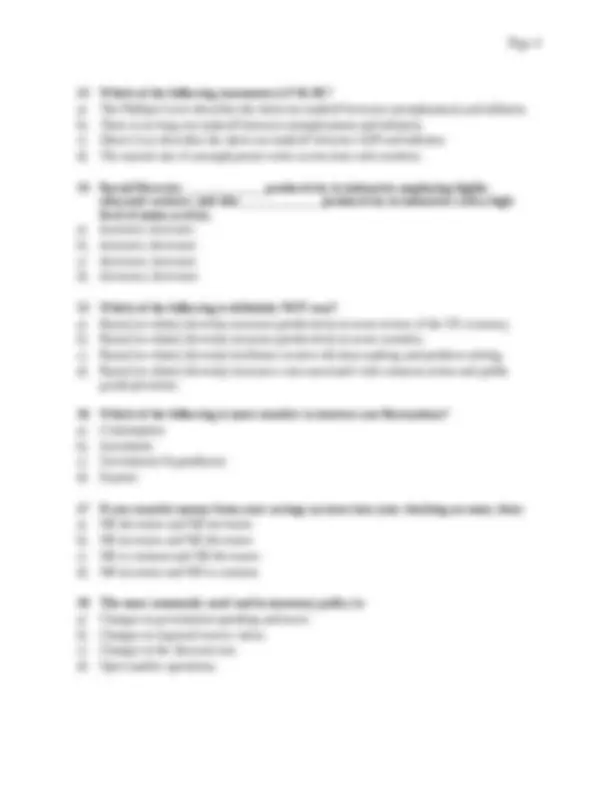
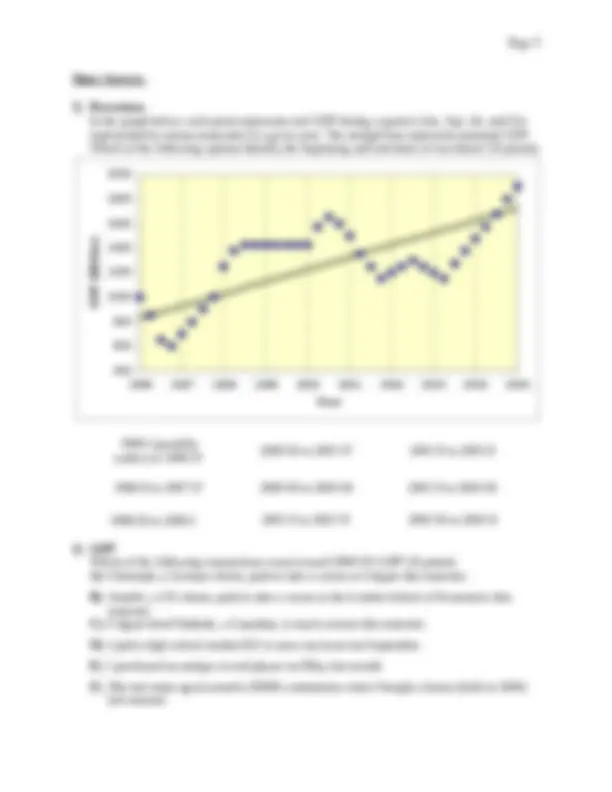
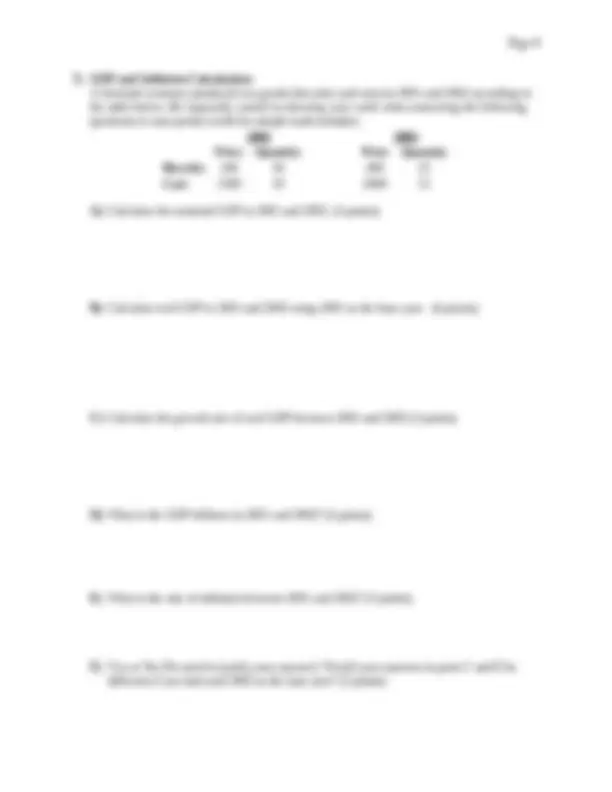
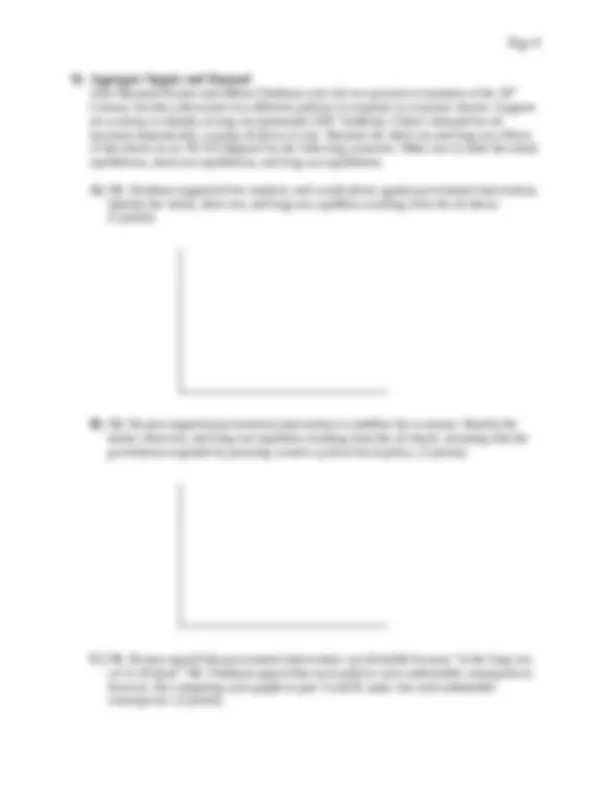
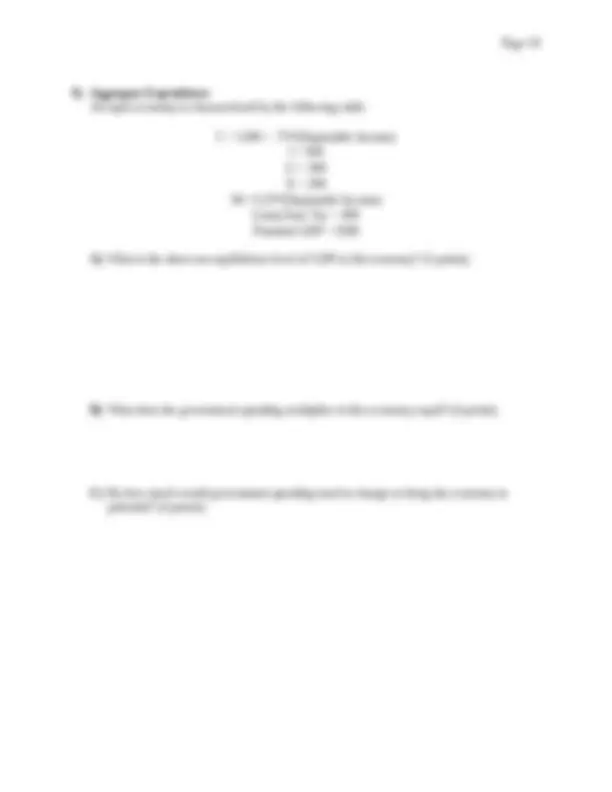


Study with the several resources on Docsity

Earn points by helping other students or get them with a premium plan


Prepare for your exams
Study with the several resources on Docsity

Earn points to download
Earn points by helping other students or get them with a premium plan
Community
Ask the community for help and clear up your study doubts
Discover the best universities in your country according to Docsity users
Free resources
Download our free guides on studying techniques, anxiety management strategies, and thesis advice from Docsity tutors
Material Type: Exam; Class: Introduction to Economics; Subject: Economics; University: Colgate University; Term: Unknown 1989;
Typology: Exams
1 / 10

This page cannot be seen from the preview
Don't miss anything!







Multiple Choice. Select one “BEST” answer for each question. (3 points each) 1 The "bowed out" shape of the production possibilities curve arises because: a) As we move farther inside the PPC, an economy loses increasing amounts of both goods. b) The opportunity cost of moving from a point on the PPC to a point outside the PPC increases. c) To continue to get the same increment in the production of a particular good, you must give up more and more of the other good. d) Since resources are scarce, producing more of one good means we must produce less of another. 2 The imposition of a price ceiling leads to: a) Excess Demand. b) Excess Supply. c) A Surplus. d) Both b and c are correct. 3 Margarine is a good example of: a) An inferior good. b) A luxury good. c) A normal good. d) A complement of butter. 4 The most common form of competition in the US is: a) Perfect Competition. b) Monopolistic Competition. c) Oligopoly. d) Monopoly. 5 The price of a good reflects both the marginal social benefit and the marginal social cost of production: a) In a command and control economic system. b) In a perfectly competitive free-market economic system in the absence of externalities. c) In a free-market economic system. d) In a perfectly competitive economic system. 6 Which one of the following purchases the largest share of GDP? a) Consumers. b) Firms. c) The Government. d) Foreigners.
13 Which of the following statements is FALSE? a) The Phillips Curve describes the short-run tradeoff between unemployment and inflation. b) There is no long-run tradeoff between unemployment and inflation. c) Okun's Law describes the short-run tradeoff between GDP and inflation. d) The natural rate of unemployment varies across time and countries. 14 Racial Diversity _____________ productivity in industries employing highly- educated workers, and also _____________ productivity in industries with a high level of union activity. a) increases; increases b) increases; decreases c) decreases; increases d) decreases; decreases 15 Which of the following is definitely NOT true? a) Racial (or ethnic) diversity increases productivity in most sectors of the US economy. b) Racial (or ethnic) diversity increases productivity in most countries. c) Racial (or ethnic) diversity facilitates creative decision making and problem solving. d) Racial (or ethnic) diversity increases costs associated with common action and public goods provision. 16 Which of the following is most sensitive to interest rate fluctuations? a) Consumption b) Investment c) Government Expenditures d) Exports 17 If you transfer money from your savings account into your checking account, then: a) M1 decreases and M2 increases. b) M1 increases and M2 decreases. c) M1 is constant and M2 decreases. d) M1 increases and M2 is constant. 18 The most commonly used tool in monetary policy is: a) Changes in government spending and taxes. b) Changes in required reserve ratios. c) Changes in the discount rate. d) Open market operations.
**Short Answer.
5) Tax Policy Many young adults claim they would pay any price to attend college. Suppose the demand for college is perfectly inelastic. A) The government decides to charge colleges a tax (T) for every student enrolled. Sketch a supply and demand diagram to illustrate the effects of this tax. Indicate the free market price of enrollment, the price charged to students, and the price earned by colleges. (8 points) B) Who pays the incidence of this tax (no need to justify your answer)? (2 points) C) Comment on the size of the inefficiency created by this tax policy. (2 points) 6) Inflation In 1817, 13 men founded what would become Colgate University with “13 dollars, 13 prayers, and 13 articles.” According to the Federal Reserve Bank of Minneapolis (http://minneapolisfed.org/Research/data/us/calc/hist1800.cfm), the CPI in 1817 was about 50, and the CPI in 2006 is about 600. A) What is the total rate of inflation between 1817 and 2006? (3 points) B) What is the nominal and real value of the money used to found our fine institution? (5 points)
7) GDP and Inflation Calculations A fictional economy produced two goods (bicycles and cars) in 2001 and 2002 according to the table below. Be especially careful in showing your work when answering the following questions to earn partial credit for simple math mistakes. 2001 2002 Price Quantity Price Quantity Bicycles 100 50 400 25 Cars 1500 10 2000 15 A) Calculate the nominal GDP in 2001 and 2002. (4 points) B) Calculate real GDP in 2001 and 2002 using 2001 as the base year. (4 points) C) Calculate the growth rate of real GDP between 2001 and 2002 (3 points) D) What is the GDP deflator in 2001 and 2002? (4 points) E) What is the rate of inflation between 2001 and 2002? (3 points) F) Yes or No (No need to justify your answer): Would your answers in parts C and E be different if you had used 2002 as the base year? (2 points)
9) Aggregate Expenditure An open economy is characterized by the following table: C = 1200 + .75(Disposable Income) I = 500 G = 300 X = 200 M = 0.25(Disposable Income) Lump Sum Tax = 400 Potential GDP = 3500 A) What is the short-run equilibrium level of GDP in this economy? (5 points) B) What does the government spending multiplier in this economy equal? (4 points) C) By how much would government spending need to change to bring the economy to potential? (4 points)